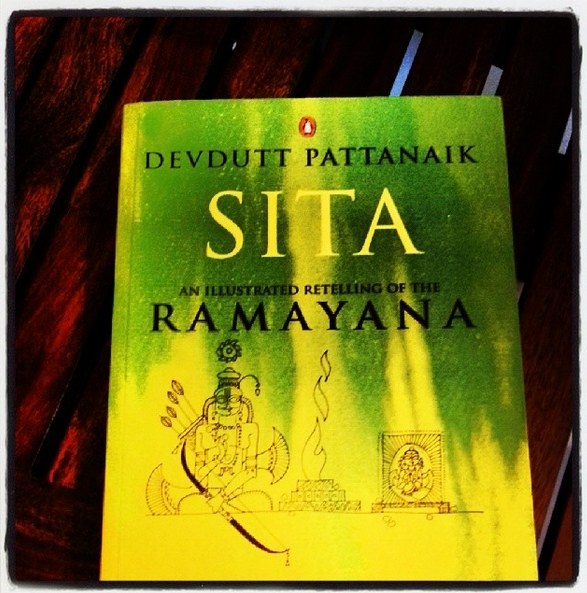Devdutt Pattanaik
Fantastic!
When I reached page 250 (almost 5/6th of the book!) – at which point Sita is freed – I finally allowed myself the comparison that had been bubbling inside my head for a while. Jaya, an illustrated retelling of the Mahabharata by the same author, ranks among my top five books of all time. Thus far, this book had not really touched those levels. Rationalisation was easy – the Mahabharata is perhaps a more complex and interesting tale because of the sheer number of characters, the back stories, and the grey shades that permeate every character in it. There were many little nuggets I hadn’t known about earlier, and that made the reading more exciting. On a relative note, the Ramayana is more ‘linear’, and there are a limited number of layers that the author can add to situations or characters. I consoled myself with the fact that the narration was as spectacular as Jaya, and I had gained at least a couple of perspectives beyond my current understanding of the epic and its underlying philosophies. (Aham, and Aham Brahmasmi, for example) I did wonder though, why the author had to call it Sita – there wasn’t really a justification.
And then, I continued reading. It is in Uttara- Ramayana that the author really comes into his own, almost like a reflection of his protagonist – Sita. The author had mentioned a dichotomy of prakriti (nature) and sanskriti (culture) on several occasions, and Sita’s separation from Ram gives her the freedom to live her life in tune with the former. This section shows the maturity of Sita’s character and also becomes a justification of the title, for we truly understand that Ram and Sita are inseparable as concepts. Despite knowing the story, the narration in the final pages really tug at your heart!
Ram’s characterisation also deserves a mention. He is steadfast in his dharma, and does not expect any understanding from anyone else, including fate. He implicitly knows that Sita is the only one capable of understanding his reasons and actions fully. His perspectives are not blind – in fact, several times in the course of the book, he justifies the positions and actions of characters who might be considered antagonists. His faith in karma and dharma are unflappable and the author brings out the Maryada Purushottam really well.
The narrative largely remains faithful to Valmiki’s version but also has an eclectic mix of other versions. At some points in the book, we also get an understanding not just of (the then) prevalent societal mores, but also their reasons.
It is a wonderful read, and takes its rightful place beside Jaya as a favourite!
P.S. If you have read Jaya, and noted the difference between Jaya and Vijaya, watch out for the parallel take on Durga and Shakti.


Leave a Reply